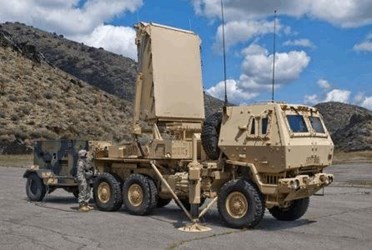Raytheon, Lockheed Martin Mark Milestones With Next-Gen Radar Systems
By Jof Enriquez,
Follow me on Twitter @jofenriq

Raytheon’s AN/SPY-6(V) Air and Missile Defense Radar (AMDR), the first scalable radar designed to replace SPY-1D radars on new Aegis warships, has completed its first dedicated Ballistic Missile Defense exercise in Hawaii. Meanwhile, Lockheed Martin announced a new U.S. Army contract worth $1.58 billion for full-rate production of Q-53 solid-state radar systems.
AMDR is the next-generation integrated air and ballistic missile defense radar for the U.S. Navy, and is considered the first truly scalable radar, built with modular building blocks that can be grouped to form any size radar aperture, either smaller or significantly larger than the long-serving SPY-1D(V) aboard the Aegis combat system.
Raytheon has successfully met development milestones for AMDR since receiving the contract in 2013 for the engineering and modeling development phase design, development, integration, test, and delivery of AMDR and Radar Suite Controller (RSC) for Flight III Arleigh Burke (DDG 51) class destroyers. Recent milestones include the system's first tracking of multiple satellites in October 2016, and executing its first integrated air and missile defense track by simultaneously tracking aircraft and satellites in November 2016. Most recently, it completed live testing at the U.S. Navy's Pacific Missile Range Facility (PMRF) in Kauai, Hawaii, where it searched for, acquired, and tracked a medium-range ballistic missile target, from launch through flight.
"The radar performed exactly as we expected it to during this mission – all systems were green," said Raytheon's Tad Dickenson, director of the Air and Missile Defense Radar program, in a news release. "These successes are significant achievements and a testament to the expertise and commitment of this Government and Raytheon team."
"This marked a historic moment for the Navy. It's the first time a ballistic missile target was tracked by a wideband digital beamforming radar," said U.S. Navy Captain Seiko Okano, Major Program Manager for Above Water Sensors, Program Executive Office Integrated Warfare Systems "AN/SPY-6 is on track for delivery to DDG 51 Flight III."
After completing said milestones throughout the radar’s Engineering and Manufacturing Development phase, it will now transition to Low-Rate Initial Production, according to Defense News.
Raytheon in October 2013 won the $386 million award to develop and manufacture AMDR over rival Lockheed Martin, who initially lodged a protest, but later withdrew it "in the best interest of the Navy and Lockheed Martin." Lockheed Martin developed the SPY-1D radars that are set to be replaced by AMDR.
The company may have lost that radar contract with the U.S. Navy, but it just secured a mega-deal with the U.S. Army to ramp up production of another advanced radar system, the Q-53 radar. Lockheed won the development contract in 2007 for the radar, which has been deployed in Iraq and Afghanistan since 2010.
The solid-state phased array AN/TP-Q-53 radar system (also known as the Counter Fire Target Acquisition Radar System) can detect enemy fire — rockets, mortars, and artillery — from any direction and predict where an incoming round will strike. Q-53 also has the ability to identify and track unmanned aerial systems (UAS). It replaces the aging AN/TPQ-36 and AN/TPQ-37 medium-range radars in the U.S. Army’s inventory.
Lockheed marked the manufacture of the radar’s 100th unit by its four facilities in and around Syracuse, N.Y. in January, reports WBNG.
Now, the manufacturing sites are expected to go from low-rate to full-rate production of the Q-53 radars with the awarding of a five-year, $1.58 billion contract to Lockheed Martin. According to Syracuse.com, Army officials had informed U.S. Sen. Charles Schumer (D-NY) that full production would allow for the acquisition of 127 of the radar systems, including 50 to "satisfy evolving foreign military sales and/or U.S. requirements."
